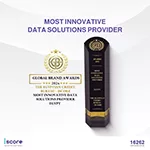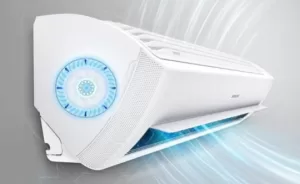How Smart Kitchen Technology Is Transforming Global Food Brands

Valued at $9.45 trillion globally, the food industry is one of the most significant industries on our planet. It’s also a space where innovation and technology are always welcome if they can speed things up, improve flavor, or make storage safer and more efficient.
Nowadays, the one gathering everyone’s attention is smart kitchen technology. Equipment that is connected to the internet and driven by AI to reduce waste, streamline operations, and optimize resource management. Overall, global food brands have a lot to win from welcoming this sort of tech.
If this sounds a bit too futuristic, we understand — it can be challenging to wrap your mind around the constant move forward. But the food industry doesn’t wait for anyone. So, let’s have a look at what it means to merge smart technology and food.
How is Smart Kitchen Tech Changing the Food Industry?
Smart kitchen equipment is designed to integrate advanced tech, such as IoT (Internet of Things), AI, machine learning, and real-time data analytics. This makes it possible to automate and remotely monitor key factors of quality, such as temperature control, inventory tracking, cooking precision, energy usage, or predictive maintenance.
When you have this data in real-time, it’s easier to improve workflows and make growth-oriented business decisions. Kitchen equipment producers understand this aspect, which is why more are taking this path.
Let’s take a look at Turbo Air, a staple name in the commercial refrigeration industry. Their equipment features a wide range of smart features, like digital temperature monitoring, energy-efficient compressors, and self-cleaning condenser systems. You can see some of their more interesting models and features in the RestaurantSupply Turbo Air catalog.
The Smart Kitchen of the Future
Even though the food industry loves innovation, changes can’t happen overnight. Therefore, it may take a while until we see fully automated kitchens that you can fully monitor from a distance.
But let’s take a look at what we should expect in the near future:
IoT in Smart Appliances
IoT-powered kitchen appliances (fridges, ovens, prep stations, and even dishwashers) track everything from internal temperatures and energy usage to door activity and equipment performance. This makes the monitoring, management, and maintenance of their operations a lot easier.
The data is deposited in the cloud, where food brands can use it to optimize workflows and design more efficient plans. From a business perspective, this data is gold for lowering costs associated with both staff and energy consumption, as well as improving uptime.
For food brands, especially those operating at scale, IoT integration means more control with less hands-on effort.
Robotics and Automation
You’ve probably seen ads for the kitchen of the future, where sleek-looking robots or just robotic arms are doing the cooking in a fully automated kitchen. We’re not there yet. For now, automation means building systems that boost speed, accuracy, and repeatability.
Automation is not about getting rid of human workers. Instead, it’s a way to overcome staffing shortages, reduce human error, and maintain consistent product quality at scale.
Across the industry, we’re seeing machines handle repetitive tasks like frying, portioning, and packaging, freeing up human workers for roles that require judgment or creativity. In manufacturing, robotics is helping streamline sorting and inspection, making it easier to hit quality standards without slowing down production.
Wrap Up
Smart kitchen technology is the future of food brand operations. As innovation accelerates, we’ll see even tighter integration between AI, automation, and sustainability. Brands that adopt these tools early will gain a competitive edge in efficiency, consistency, and customer trust.
Considering the food industry’s love for innovation, smart tech will soon become essential for staying relevant and resilient. So it may be a good idea to start thinking about integration.












































